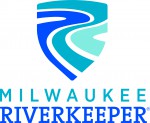Milwaukee Riverkeeper challenges Wisconsin Department of Natural Resources on Estabrook Dam repair
DNR's Environmental Impact Statement insufficient to evaluate impacts of repairing the Estabrook Dam
MILWAUKEE – On Monday, May 23, 2016, Milwaukee Riverkeeper filed a lawsuit challenging the Wisconsin Department of Natural Resources‘ (DNR) final Environmental Impact Statement (EIS) released on April 21, 2016, which evaluated Milwaukee County’s proposed repair of the Estabrook Dam and several proposed dam operational scenarios. The EIS fails to consider or sufficiently consider several key factors in what is intended to be a comprehensive evaluation of a publicly funded project and, consequently, does not comply with Wisconsin state law.
Milwaukee Riverkeeper is challenging the DNR’s EIS for the following reasons:
The DNR did not consider removal of the Estabrook Dam as a reasonable alternative to repair.
The DNR has taken a position that they do not have the authority to consider other alternatives to repair of the Dam because that was not in Milwaukee County’s proposal. However, Wisconsin law requires WDNR to consider dam removal as a potential alternative to dam repair and thus, DNR has not complied with the law.
The DNR did not require an approved plan for the repair of Estabrook Dam from the Milwaukee County Board of Supervisors detailing sufficient evidence to support their long-term financial commitment to repair and operation and maintenance ofthe Estabrook Dam.
The information (Environmental Impact Report) submitted by Milwaukee County to the DNR and the DNR’s EIS lack sufficient detail to ascertain compliance with Wisconsin law in three main areas:
1) State law says WDNR cannot issue a permit to continue operating a dam if the permittee does not demonstrate sufficient financial wherewithal to maintain and operate the repaired dam in a safe manner. While the EIS includes the County’s estimated costs of repair of the Dam with fish passage, operation, and maintenance for the next 20 years, it does not detail how the County will pay for these costs (financial wherewithal). This is pertinent because lack of sufficient funding was a fundamental reason the Dam fell apart and became unsafe in the first place. The County has not provided enough evidence that it will be able to afford to operate the Dam other than stating they have a large annual budget.
2) By repairing the Dam, the County will be using public funds for a private purpose to create an artificial lake for motorized boating and other private recreational activities for a handful of homeowners. Because there is no public benefit that will be achieved through the repair of the Dam, the County is required by Wisconsin law to perform a special assessment to determine which benefitting properties should bear the burden of the expense of repair. The County has not performed this assessment and rather plans to have all Milwaukee County residents pay for the repair of the Dam.
3) The plan submitted by Milwaukee County to the DNR has NEVER been presented in full to the current or past Board of Supervisors for approval. The County Board approved several State budgets and bonding packages with piecemeal funding for the Dam, but have never committed to a plan or budget for full repair and operation and maintenance of the structure. State law requires a dam owner to take a formal vote, and this has never happened.
Under Wisconsin law, the DNR cannot approve a repair plan that does not realistically demonstrate how the County will pay for the repair and operation of the Dam for at least 10 years, insists taxpayers foot the bill for a private benefit, and has never been officially approved by the Milwaukee County Board of Supervisors.
The DNR did not properly consider objections to repair of the Dam from the municipalities directly affected by the operation of the Dam.
The City of Milwaukee, which owns the east bank of the Milwaukee River where the Dam is located, and the Village of Shorewood, which owns property directly downstream of the Dam, have both released formal resolutions opposing the repair of the Dam. Under Wisconsin law, the DNR cannot issue a permit to operate the Dam without adequately addressing these objections, which it has not done.
The DNR did not fully consider flood risks associated with the operation of the Dam if it is repaired.
Repairing the Estabrook Dam will increase flood risk upstream of the Dam. The DNR must evaluate that flood risk as part of the EIS. Fish passage has been included in the plan to repair the Dam. However, at the time the EIS was issued the County had yet to fully design a fish passage. Further, details regarding how it would be operated to ensure its effectiveness were not provided to the public. Since the specifics of the fish passage were not included in the proposal for repair, the DNR did not fully evaluate the effects of flooding under all operational scenarios of the Dam, as required by Wisconsin law.
We hope this lawsuit would result in: 1.) the DNR’s rewriting of this EIS to include all alternatives for Estabrook Dam; 2.) the DNR requiring the County to prove they have funds to operate and maintain this Dam; and 3.) the DNR addressing the objections of surrounding and affected municipalities.
“In only evaluating repair options of the Estabrook Dam, the DNR did not meet requirements laid out in Wisconsin state law to protect the public’s rights, in letter or in spirit. This is a pretty clear case in which our state law provides the DNR with not only the authority to do what is best for the environment and public safety, but also the responsibility to exercise it to protect the Milwaukee River for current and future generations both upstream and downstream,” said Cheryl Nenn, Riverkeeper at Milwaukee Riverkeeper.
The DNR’s final EIS can be found at dnr.wi.gov/topic/eia/estabrook.html.
Milwaukee Riverkeeper:
Milwaukee Riverkeeper’s mission is to protect, improve and advocate for water quality, riparian wildlife habitat, and sound land management in the Milwaukee, Menomonee, and Kinnickinnic River Watersheds. We envision a future in which people from all walks of life can enjoy the healthy waterways of the Milwaukee River Basin.
Milwaukee Riverkeeper advocates for compliance with environmental laws and is licensed by the Waterkeeper Alliance, a network with over 282 organizations worldwide dedicated to clean water and healthy communities. For more information about Milwaukee Riverkeeper, visit: www.milwaukeeriverkeeper.org
NOTE: This press release was submitted to Urban Milwaukee and was not written by an Urban Milwaukee writer. While it is believed to be reliable, Urban Milwaukee does not guarantee its accuracy or completeness.
Recent Press Releases by Milwaukee Riverkeeper
Let Our Rivers Unite Us!
Apr 11th, 2024 by Milwaukee RiverkeeperMilwaukee Riverkeeper Spring Cleanup Event Slated for April 20, 2024
Milwaukee Riverkeeper Annual Report Shows Improvement in River Health
Jan 19th, 2024 by Milwaukee RiverkeeperAnnual report celebrates progress and highlights efforts to restore and reconnect rivers to improve water quality in Milwaukee River Basin

























Tear the damn thing down already. Is it possible to waste any more time, money or effort on this obvious solution?
Roughly 3/4 of the shoreline in the river empoundment above the dam is public property (3 county parks and parkway) and there are at least 4 public boat (canoe/kayak) launches in the area. This public recreation area debunks the claim that only private property owners stand to benefit from the recreational area created.
Just like Preserve our Parks… Riverkeepers has gone to that zealous point of supporting decisions without rational regard to other options just for the sake of following their set doctrine. A working dam here creates a public recreation area unlike any other in the city of Milwaukee. Best of all, it can be done in a way that keeps the river clean, healthy, and allows for fish to pass. They are just wasting our tax dollars by pursuing this lawsuit.